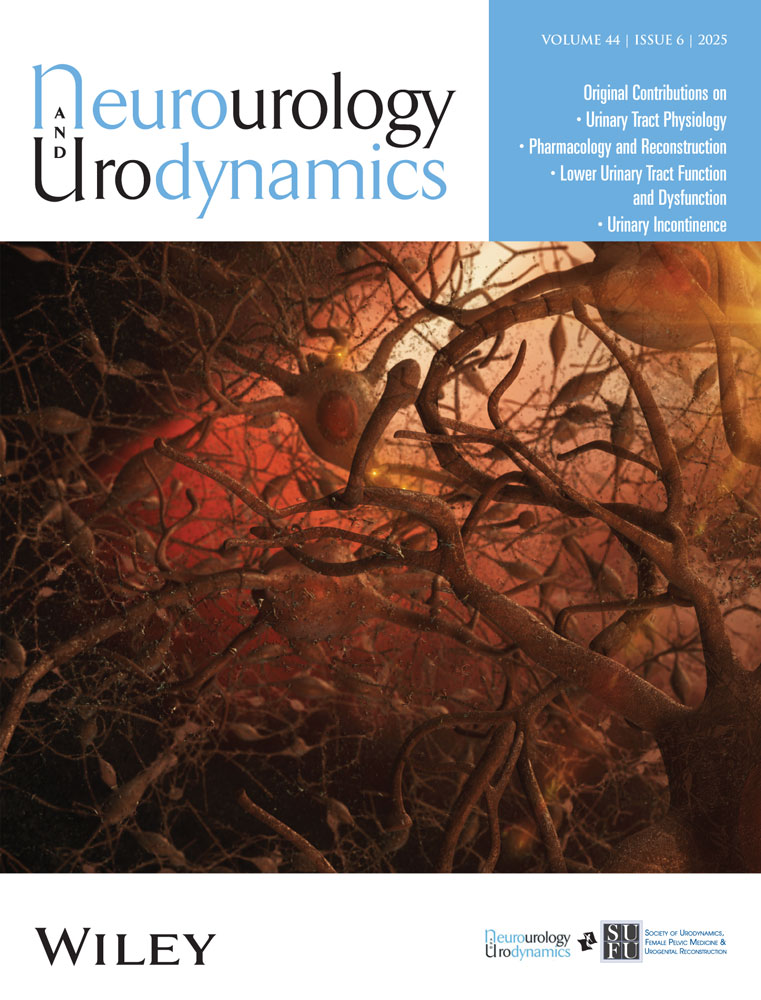Cholinergic and purinergic contribution to the micturition reflex in conscious rats with long-term bladder outlet obstruction
Abstract
The urethra of female Wistar rats was partially obstructed for 15 weeks. The effects of atropine (1 mg/kg i.v.), suramin (100 mg/kg i.v.), and a combination of atropine and suramin on the peak micturition pressure (MP) were compared during cystometry in conscious rats controls or subjected to outlet obstruction. On the isolated bladder dome, we studied the inhibitory effect of 1 μmol/L atropine, 1 mmol/L suramin, and the combination of the two drugs on contractions induced by electrical field stimulation (EFS). We studied also the contractile response to 80 mmol/L KCl and the concentration-response curves to noradrenaline, phenylephrine, and carbachol on the bladder dome and bladder neck and α, β-methylene adenosine triphosphate on the bladder dome. In conscious rats, the MP, bladder capacity, and micturition volume were significantly higher in obstructed rats than in controls. Suramin induced the same inhibition in the two groups of animals (−30.7 ± 13.3% in controls and −29.2 ± 8.5% in obstructed rats). Atropine decreased the MP, but this effect was twofold greater in obstructed animals (−28.1 ± 3.1% and−65.1 ± 6.9% in control and obstructed animals, respectively). However, the combined effect of atropine and suramin was additive in controls but not in obstructed (−56.7 ± 5.4% and −55.9 ± 9.4%, respectively). Similar results were obtained in vitro using 1 μmol/L atropine and 1 mmol/L suramin. In the obstructed bladder dome and bladder neck, we found a great reduction in KCl- and carbachol-induced contractility but no difference in the response to EFS. Responses to noradrenaline and phenylephrine were moderately reduced in the bladder neck only, whereas responses to α, β-methylene adenosine triphosphate in the bladder dome were not reduced except at the concentration of 300 μmol/L. We conclude that long-term obstruction in rats could induce cholinergic nerve fiber proliferation as suggested by the decrease in M3 muscarinic receptor contractility (desensitization) and by a greater sensitivity of the MP to atropine. Neurourol. Urodynam. 21:142–153, 2002. © 2002 Wiley-Liss, Inc.




